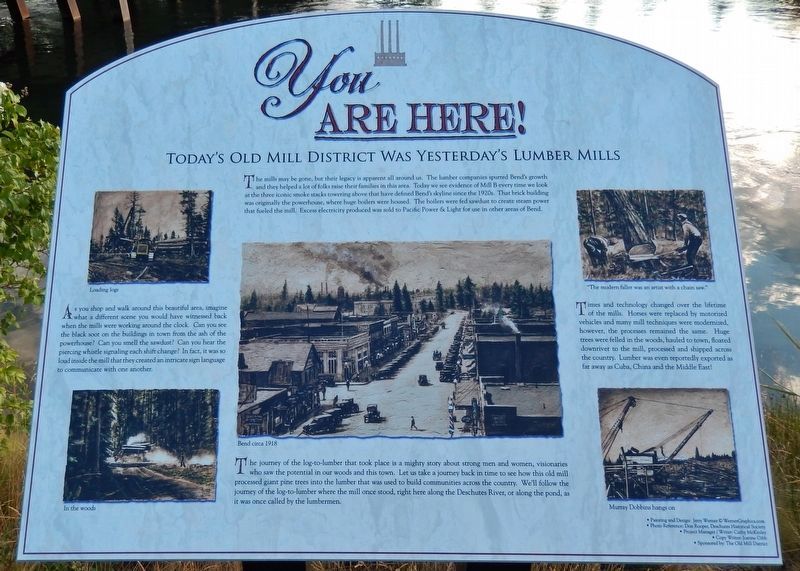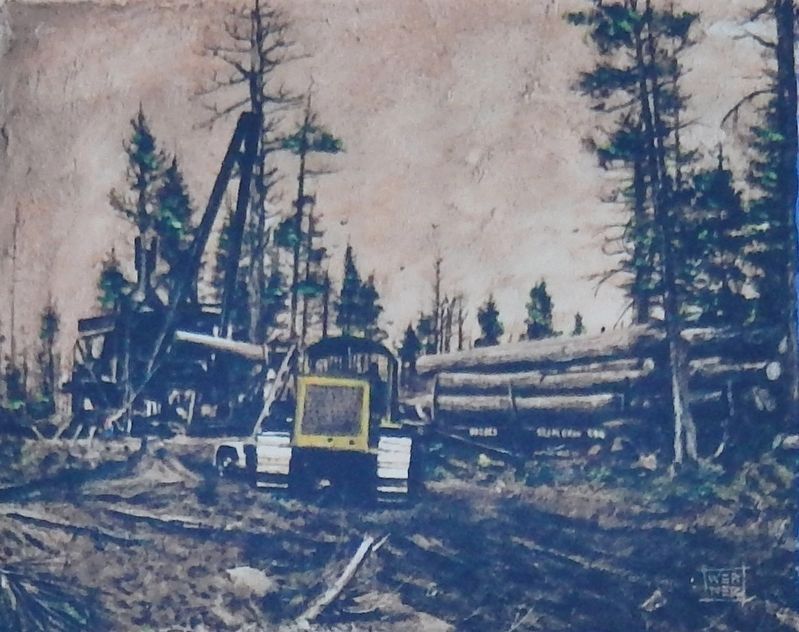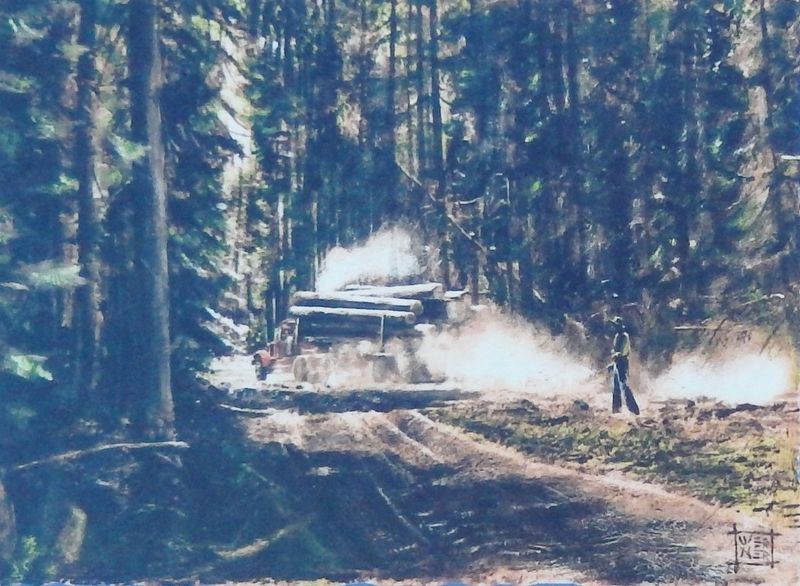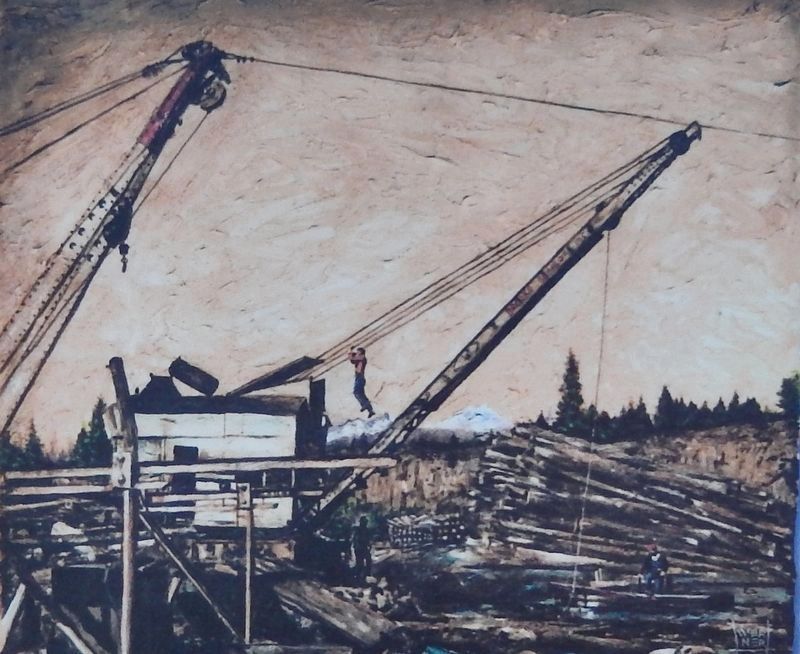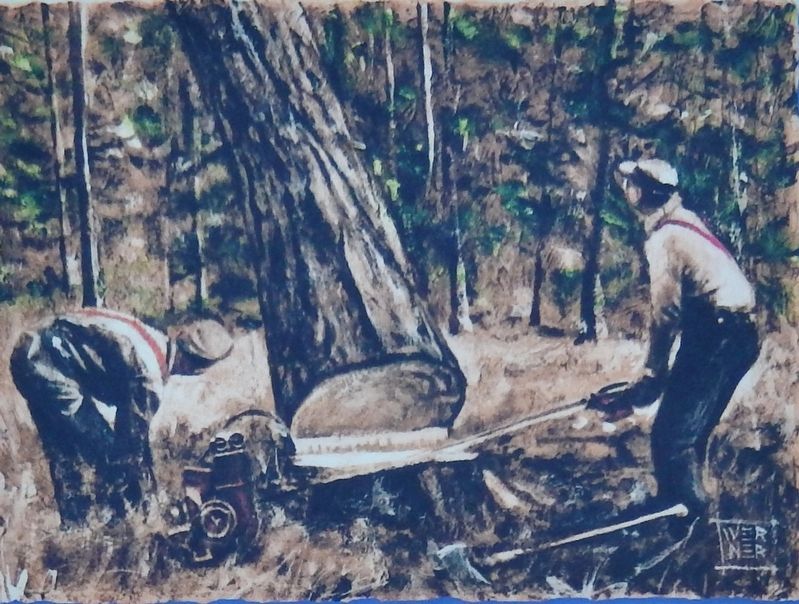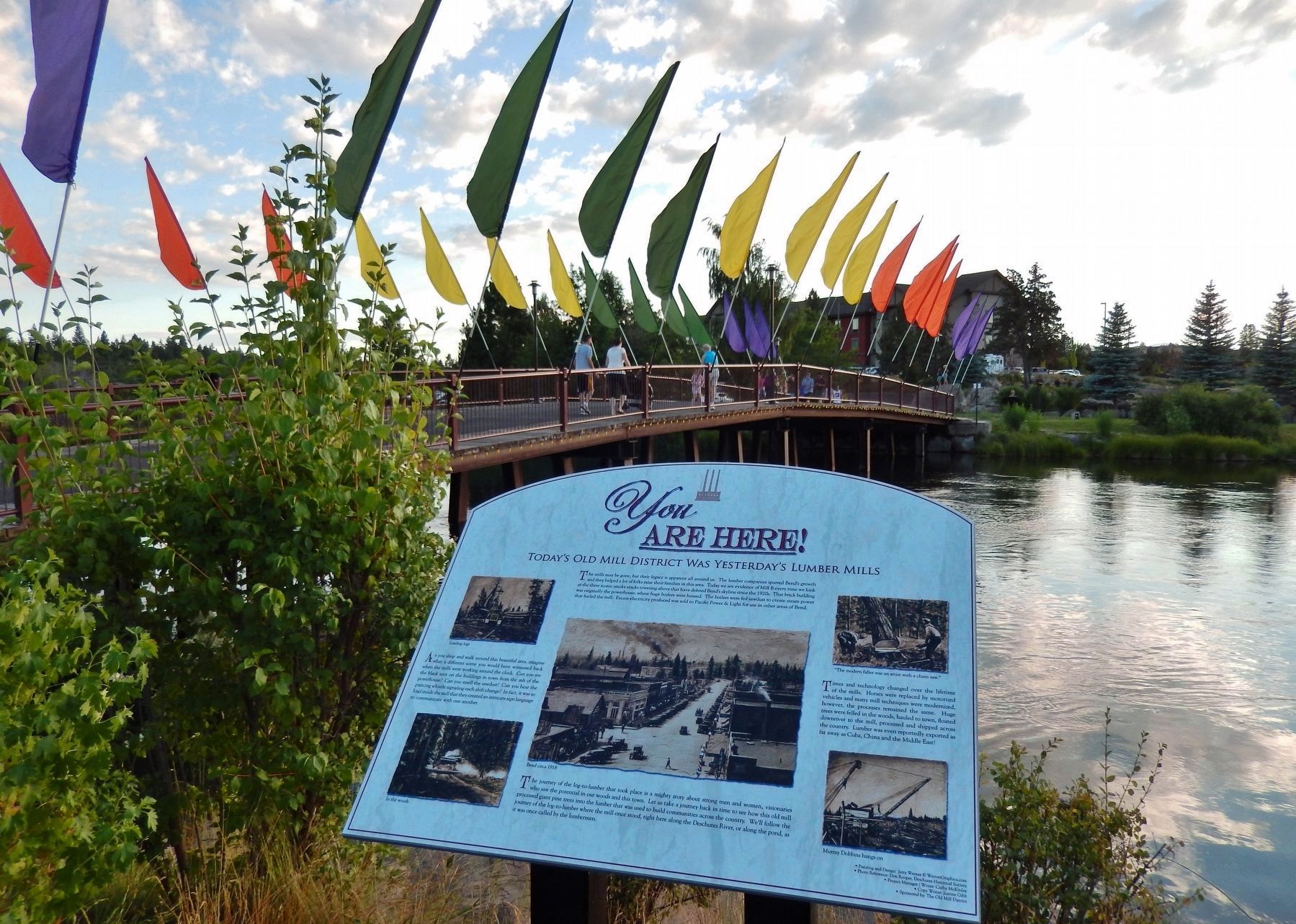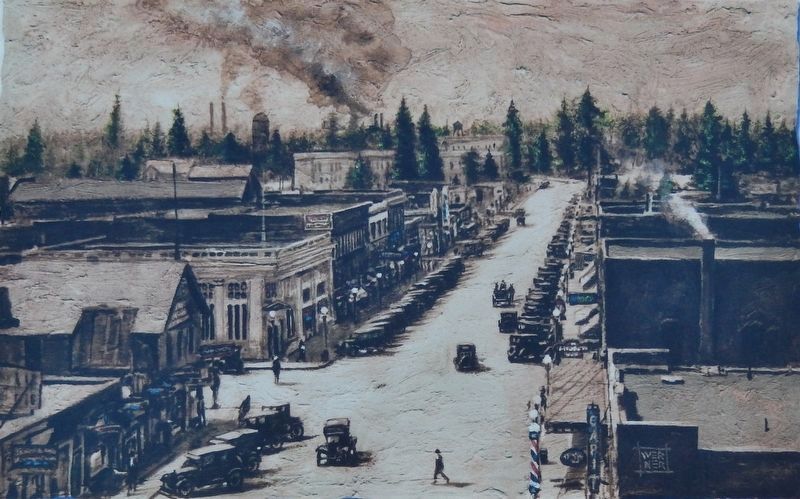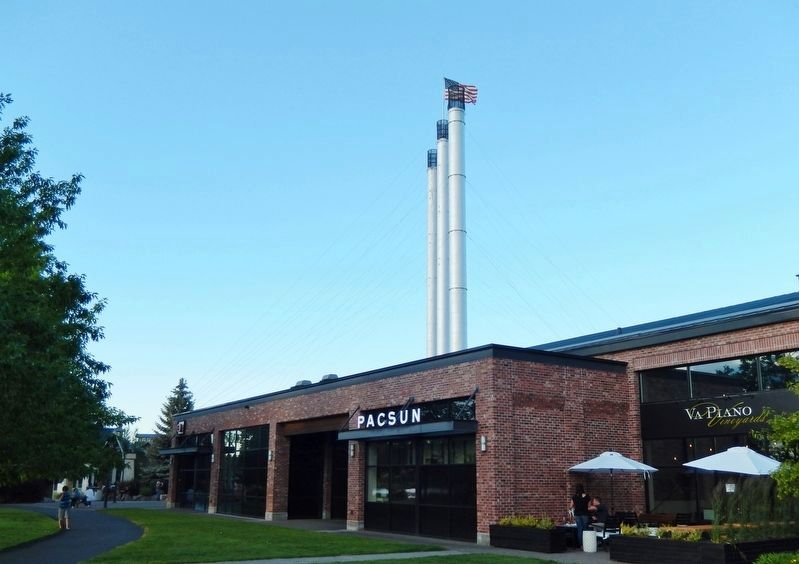Bend in Deschutes County, Oregon — The American West (Northwest)
Today's Old Mill District
Was Yesterday's Lumber Mills
The mills may be gone, but their legacy is apparent all around us. The lumber companies spurred Bend's growth and they helped a lot of folks raise their families in this area. Today we see evidence of Mill B every time we look at the three iconic smoke stacks towering above that have defined Bend's skyline since the 1920s. That brick building was originally the powerhouse, where huge boilers were housed. The boilers were fed sawdust to create steam power that fueled the mill. Excess electricity produced was sold to Pacific Power & Light for use in other areas of Bend.
As you shop and walk around this beautiful area, imagine what a different scene you would have witnessed back when the mills were working around the clock. Can you see the black soot on the buildings in town from the ash of the powerhouse? Can you smell the sawdust? Can you hear the piercing whistle signaling each shift change? In fact, it was so loud inside the mill that they created an intricate sign language to communicate with one another.
The journey of the log-to-lumber that took place is a mighty story about strong men and women, visionaries who saw the potential in our woods and this town. Let us take a journey back in time to see how this old mill processed giant pine trees into the lumber that was used to build communities across the country. We'll follow the journey of the log-to-lumber where the mill once stood, right here along the Deschutes River, or along the pond, as it was once called by the lumbermen.
Times and technology changed over the lifetime of the mills. Horses were replaced by motorized vehicles and many mill techniques were modernized, however, the processes remained the same. Huge trees were felled in the woods, hauled to town, floated downriver to the mill, processed and shipped across the country. Lumber was even reportedly exported as far away as Cuba, China and the Middle East!
Erected by The Old Mill District.
Topics. This historical marker is listed in these topic lists: Horticulture & Forestry • Industry & Commerce.
Location. 44° 2.711′ N, 121° 18.968′ W. Marker is in Bend, Oregon, in Deschutes County. Marker can be reached from SW Powerhouse Drive north of SW Columbia Street when traveling west. Marker is located along the Deschutes River walkway, beside the foot bridge, on the east side of the river, in Bend's Old Mill District. Touch for map. Marker is at or near this postal address: 475 SW Powerhouse Drive, Bend OR 97702, United States of America. Touch for directions.
Other nearby markers. At least 8 other markers are within walking distance of this marker. Location, Location & Location (within shouting distance of this marker); Thank Goodness for Water and Gravity (within shouting distance of this marker); Journey of the Log to Lumber (about 300 feet away, measured in a direct line); The Mill Transformed Trees into Highly Prized Lumber (about 500 feet away); Logs Finally Become Lumber (about 700 feet away); Home of Kathleen "Klondike Kate" Rockwell (approx. 0.8 miles away); "Klondike Kate" House (approx. 0.8 miles away); Old Bulletin Building (approx. 0.9 miles away). Touch for a list and map of all markers in Bend.
Related markers. Click here for a list of markers that are related to this marker. Old Mill District
Also see . . .
1. History of Bend’s Old Mill District. Old Mill District website entry:
For nearly a century, timber production was the unchallenged king in Bend, most of it taking place in the Old Mill District. Hardy men used axes, crosscut saws, horses, and “high-wheel” rigs to cut down huge Ponderosa pines in the surrounding forests. The first of the big mills, operated by the Shevlin-Hixon Co., opened in March 1916. A month later a rival company, Brooks-Scanlon, began operations at its “Mill A” complex on the other side of the river. In 1922 Brooks-Scanlon established a new, bigger mill complex upstream from Mill A. This “Mill B” site makes up the largest portion of the Old Mill District. At their peak, the Brooks-Scanlon and Shevlin-Hixon operations were two of the largest pine sawmills in the world, running around the clock and employing more than 2,000 workers each. (Submitted on February 8, 2018, by Cosmos Mariner of Cape Canaveral, Florida.)
2. Old Mill District. Wikipedia entry:
The Old Mill District formerly housed two competing lumber mills. The Shevlin-Hixon & Brooks-Scanlon mills dominated Bend’s economy, pumping money and business into the town. After more than 20 years of non-stop logging, the forests in Central Oregon were becoming depleted. In 1937, the Bend Chamber of Commerce warned of economic disaster unless the mills started sustainable forestry. The mills ignored these warnings and continued producing at full capacity. By 1950, the forests' depletion led to the decline of Oregon’s logging industry. Brooks-Scanlon bought the Shevlin-Hixon mill in 1950 and closed it just four months later. The Brooks-Scanlon Mill A closed in 1983. (Submitted on February 8, 2018, by Cosmos Mariner of Cape Canaveral, Florida.)
Credits. This page was last revised on March 15, 2022. It was originally submitted on February 8, 2018, by Cosmos Mariner of Cape Canaveral, Florida. This page has been viewed 289 times since then and 30 times this year. Last updated on February 10, 2018, by Cosmos Mariner of Cape Canaveral, Florida. Photos: 1, 2, 3, 4, 5, 6, 7, 8. submitted on February 8, 2018, by Cosmos Mariner of Cape Canaveral, Florida. • Andrew Ruppenstein was the editor who published this page.
